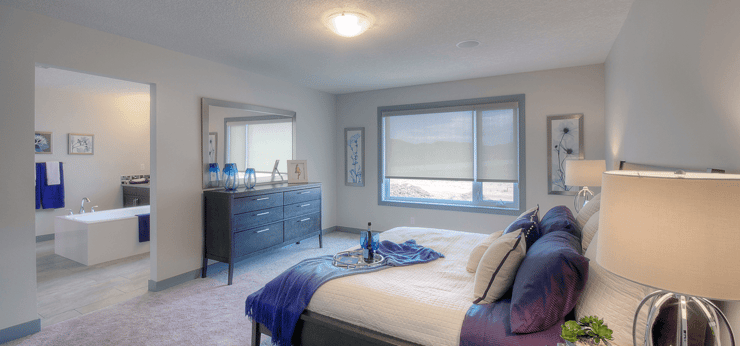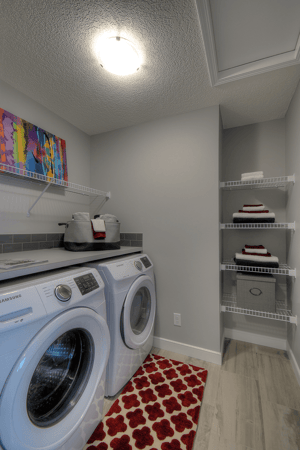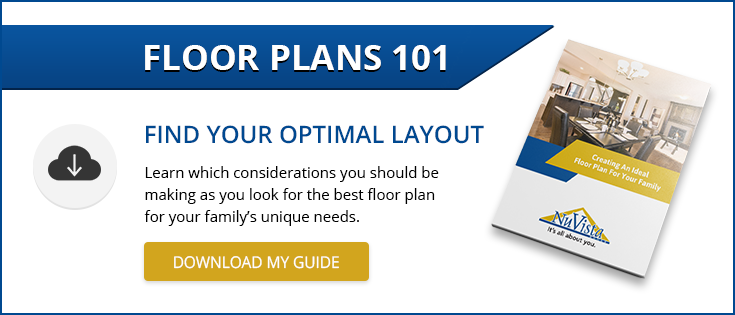 Perhaps you, like many, dream of a bigger and better, upgraded home. A home with more square footage. A home with newer finishes. This home could mean the realization of a longstanding dream. After all, traditionally, bigger is better. Or, having a larger property could simply mean that you finally have enough space to suit your family and lifestyle. However, there are some things you should know before upgrading to a larger home.
Perhaps you, like many, dream of a bigger and better, upgraded home. A home with more square footage. A home with newer finishes. This home could mean the realization of a longstanding dream. After all, traditionally, bigger is better. Or, having a larger property could simply mean that you finally have enough space to suit your family and lifestyle. However, there are some things you should know before upgrading to a larger home.
1. More Square Footage = More Cost
Oftentimes, families mistakenly think they need more square footage in every room of their house. However, because higher square footage comes at a higher cost, it's best to consider how to effectively make the most of your larger space.
Adding square footage where it's needed means you're not paying for the additional cost of space where it isn't necessary. It also means you're getting the most out of every room within your home.
2. How Square Footage Is Calculated
One of the questions you need to ask is, "How is the square footage being calculated in my new home?" Surprisingly, not all square footage is created equal. Some people may measure the entire perimeter of the home on both floors to arrive at a number. Additionally, they may include architectural features such as stairs and porches.
Without an understanding of how your home has been measured, it's hard to really understand what the number means. That's why the best thing you can do is to ask the builder what their basis for measurement is. You need to understand exactly how they calculate square footage if you're comparing homes based on size.

3. Where Do You Need It Most?
One of the easiest ways to figure out your square footage needs when you decide to upgrade is by focusing on the most-used areas in the home. Usually, this translates to added space in the kitchen, bathrooms, and recreational areas. Write down what areas you use the most in your home and the spaces you would like to use more.
Do you want a big master bedroom and space for an upstairs laundry room? Maybe you're looking forward to an open concept main floor with lots of space for your busy family. If you work from home, a flex room is definitely worth having. Knowing your priorities now will help you choose the right floor plan for your family.
If you're upsizing your home to support the needs of your growing family, then adding a defined space for your children can mean a serious upgrade in your lifestyle. Options for recreation with your additional square footage are limitless. You can create a game room, a separate living space for your teens, or even an indoor playground.
Additionally, in larger families, bathrooms are often an issue. You may want to consider upgrading the number or size of your family's bathrooms if you have several children.
Would you like a luxurious walk-in master closet? A spa-like master ensuite? Of course, you would! In fact, this could be one of the many reasons why you're choosing to upgrade your home's square footage. Amongst other things, a larger home means the possibility of more storage space.
Before you decide how to best put your extra square footage to use, consider the needs of your family. Working with a builder to create your new home gives you the flexibility to create a space that truly speaks to your lifestyle and the needs of your family.
4. Ways To Reduce Cost
Although new home builds are quite affordable, there are additional savings to be found when you opt for a new home with more square footage. For one, a newer home will always save you money on maintenance costs, especially when it comes with a great new home warranty.
The cost of square footage can vary wildly from room to room within a single house depending on the features and finishes. The most expensive rooms in a home are the kitchen and bathrooms. Whereas, the rooms that cost the least per square foot are the closets and garages - this is mostly due to the price of flooring.
Additional square footage should be thoughtfully distributed so you're able to get the most out of your home build while staying on budget. Savings can be found simply by planning your home build well and working with your home builder to meet the needs of your family and budget.
Additionally, the choices you make in your new home's materials can greatly affect the ultimate price tag of your new build. For instance, a home's flooring, fixtures, and heating systems can all vary greatly in cost. When building a new home, identify and price every item used in your build. Be realistic about what you can afford to spend and work back from there to ensure your new home will work to meet your financial needs.
5. Choose A Good Builder
Need more space but want to keep the cost of your new home build down? The answer to your dilemma can be found in the hands of a trusted building professional. A good builder will work with you to create the space you need at an affordable price. A brand new, affordable home with the perfect floor plan for your family awaits. But first, you will need to contact a builder, discuss your needs, and work on personalizing a plan to meet the needs of your lifestyle.
Upgrading to a home with more square footage will change your life. You will have more space for recreation, bigger closets, a larger kitchen, and a home that meets the needs of your family. Just remember, when upgrading, to consider how your decisions will impact your family in the long run. Take into account the costs of your home upgrades and discuss ways to save money on materials with your builder. There is little doubt that, once you have upgraded to the larger home of your dreams, you will be ecstatic with your new lifestyle.





